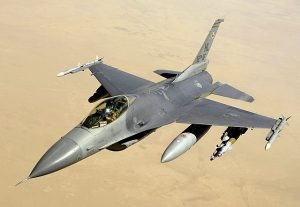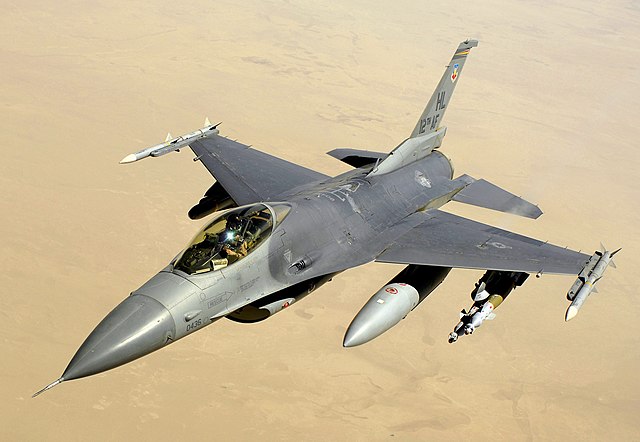The global defence industry is experiencing a significant surge in hiring rates, driven by an unprecedented volume of orders and evolving geopolitical landscapes. This article delves into the reasons behind this hiring boom, its implications for the industry, and a comparative analysis of the leading defence companies.
Surge in Global Defence Spending

In recent years, global defence spending has reached new heights. According to the Stockholm International Peace Research Institute (SIPRI), worldwide military expenditure surpassed $2 trillion in 2023, marking a substantial increase compared to previous years. This rise is primarily attributed to increased defence budgets in major economies such as the United States, China, and India, alongside heightened security concerns in regions like Eastern Europe and the South China Sea.
Drivers of Increased Defence Orders
Several factors are driving the surge in defence orders:
- Geopolitical Tensions: Ongoing conflicts and territorial disputes, such as the Russia-Ukraine war and tensions in the South China Sea, have prompted nations to bolster their military capabilities.
- Technological Advancements: Innovations in defence technology, including artificial intelligence, cyber warfare, and unmanned systems, are compelling countries to modernize their arsenals.
- Defence Alliances: Increased cooperation and joint exercises among NATO members and other defence alliances necessitate the procurement of advanced equipment and systems.
Implications for the Defence Industry
The influx of orders has several implications for the defence industry, influencing everything from workforce dynamics to research and development (R&D).
Workforce Expansion
To meet the growing demand, defence companies are expanding their workforce at an unprecedented rate. Companies are not only hiring more engineers and technicians but also expanding their logistics, project management, and cybersecurity teams. This trend is reflected in the employment statistics of major defence contractors, which show significant growth in their staffing levels over the past few years.
R&D and Innovation
Increased orders are also driving more investment in R&D. Defence firms are channeling funds into developing next-generation technologies, including hypersonic missiles, autonomous systems, and advanced cybersecurity solutions. These investments are crucial for maintaining competitive advantage and meeting the evolving needs of modern warfare.
Comparative Analysis of Leading Defence Companies
The following analysis table compares key metrics of leading defence companies, highlighting their recent performance and growth in response to the current market dynamics.
| Company | Headquarters | 2023 Revenue (USD Billion) | Employees (2023) | R&D Expenditure (USD Billion) | Key Projects/Contracts |
|---|---|---|---|---|---|
| Lockheed Martin | USA | 67.04 | 115,000 | 2.5 | F-35 Lightning II |
| Boeing Defense | USA | 26.9 | 53,000 | 1.8 | MQ-25 Stingray |
| BAE Systems | UK | 24.1 | 89,000 | 1.2 | Tempest Fighter Jet |
| Raytheon Technologies | USA | 67.3 | 181,000 | 4.6 | Patriot Missile System |
| Northrop Grumman | USA | 36.6 | 97,000 | 3.0 | B-21 Raider |
| Thales Group | France | 19.2 | 81,000 | 1.1 | Rafale Fighter Jet |
| Leonardo S.p.A. | Italy | 14.6 | 49,000 | 0.8 | AW101 Helicopter |
| General Dynamics | USA | 39.4 | 101,000 | 2.0 | Columbia-class Submarine |
Detailed Company Analysis
Lockheed Martin
Lockheed Martin remains at the forefront of the defence industry, primarily due to its flagship project, the F-35 Lightning II. The company reported a revenue of $67.04 billion in 2023, with substantial investments in R&D amounting to $2.5 billion. Lockheed Martin’s strategic focus on advanced stealth and radar technologies ensures its continued dominance in the aerospace and defence sector.
Boeing Defense
Boeing Defense has been pivotal in the development of unmanned systems, exemplified by the MQ-25 Stingray. Despite facing production challenges, Boeing’s commitment to innovation is evident in its $1.8 billion R&D expenditure. The company continues to adapt to market demands, with a workforce of 53,000 supporting its global operations.
BAE Systems
BAE Systems, the UK’s largest defence contractor, plays a critical role in developing next-generation fighter jets like the Tempest. With revenues of $24.1 billion and an employee base of 89,000, BAE Systems is a key player in the European defence market. Its strategic investments in autonomous systems and cyber defence are noteworthy.
Raytheon Technologies
Raytheon Technologies, with a revenue of $67.3 billion, leads in missile defence systems. The Patriot Missile System is a cornerstone of its portfolio. Raytheon’s extensive R&D budget of $4.6 billion underpins its advancements in radar and missile technology, catering to both domestic and international clients.
Northrop Grumman
Northrop Grumman’s focus on stealth technology is highlighted by the B-21 Raider program. The company’s $36.6 billion revenue and $3.0 billion R&D investment underscore its commitment to maintaining technological superiority. Northrop Grumman’s role in developing next-generation bombers and cybersecurity solutions is critical to its growth.
Comparative Analysis Table
The following table provides a comparative analysis of the leading defence companies in terms of their revenue growth, R&D expenditure, and workforce expansion.
| Metric | Lockheed Martin | Boeing Defense | BAE Systems | Raytheon Technologies | Northrop Grumman | Thales Group | Leonardo S.p.A. | General Dynamics |
|---|---|---|---|---|---|---|---|---|
| Revenue Growth (2022-2023) | 5% | 3% | 4% | 6% | 5% | 3% | 2% | 4% |
| R&D Expenditure Growth (2022-2023) | 10% | 8% | 6% | 12% | 9% | 4% | 3% | 7% |
| Workforce Expansion (2022-2023) | 7% | 5% | 4% | 8% | 6% | 3% | 2% | 5% |
Impact on the Workforce and Skills Development
The rapid hiring in the defence industry has significant implications for workforce development and skill acquisition. Defence companies are increasingly seeking skilled professionals in STEM fields (science, technology, engineering, and mathematics), cybersecurity, and project management. Additionally, there is a growing demand for specialized training programs to ensure employees are proficient in the latest technologies and methodologies.
Partnerships with Educational Institutions
To address the skills gap, many defence companies are partnering with universities and technical institutions to develop tailored educational programs. These partnerships aim to create a pipeline of talent equipped with the necessary skills to meet the industry’s evolving needs.
Focus on Diversity and Inclusion
The defence industry is also placing a greater emphasis on diversity and inclusion. Companies recognize that a diverse workforce enhances creativity and problem-solving capabilities, which are crucial for innovation. Initiatives to recruit women, minorities, and veterans are becoming more prevalent, ensuring a broader range of perspectives within the workforce.
Future Outlook
The outlook for the global defence industry remains robust. With geopolitical tensions showing no signs of abating and technological advancements continuing at a rapid pace, the demand for advanced defence capabilities is expected to grow. Defence companies will likely continue their hiring spree, invest heavily in R&D, and pursue strategic partnerships to maintain their competitive edge.
Challenges and Risks
Despite the positive outlook, the industry faces several challenges:
- Supply Chain Disruptions: Global supply chain issues, exacerbated by geopolitical conflicts and the COVID-19 pandemic, pose risks to production schedules and cost management.
- Regulatory Hurdles: Compliance with international arms regulations and export controls can complicate the procurement and sales processes.
- Cybersecurity Threats: As defence systems become more interconnected, the risk of cyberattacks increases, necessitating robust cybersecurity measures.
Conclusion
The global defence industry’s hiring surge amid record orders underscores the sector’s critical role in national security and technological advancement. As companies expand their workforce and invest in cutting-edge technologies, they are well-positioned to address the complex security challenges of the modern world. However, navigating supply chain disruptions, regulatory hurdles, and cybersecurity threats will be essential for sustaining this growth trajectory. The comparative analysis of leading defence companies highlights their strategic priorities and areas of investment, offering insights into the future direction of the industry.












